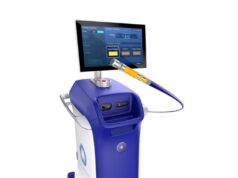
Abbott announced today that it has achieved new, major milestones to support the company’s growing suite of pulsed field ablation (PFA) solutions in electrophysiology.
These milestones include the early completion of enrolment in the VOLT-AF investigational device exemption (IDE) study supporting the Volt PFA system, and the launch of the FOCALFLEX trial to assess the company’s TactiFlex Duo ablation catheter, Sensor Enabled, intended for the treatment of patients with paroxysmal atrial fibrillation (AF).
Together, these two studies represent significant advances for the future of two Abbott PFA catheters, which are being developed as important tools for physicians treating people with abnormal heart rhythms like AF, a company press release notes.
In addition, Abbott has announced US Food and Drug Administration (FDA) clearance of the company’s Advisor HD Grid X mapping catheter, Sensor Enabled, which will further support mapping of both PFA and radiofrequency (RF) ablation cases where visualisation of cardiac anatomy is critical to ensure the best outcomes for people undergoing ablation procedures. The technology is said to offer a first-of-its-kind electrode configuration for high-density heart mapping—a design intended to make physicians more aware of electrical signals of the heart, regardless of catheter placement during an ablation procedure.
“It was exciting to participate in the VOLT-AF IDE study to help assess a next-generation PFA catheter that incorporates new design concepts we believe will advance PFA technology and improve patient outcomes,” said Monica Lo (Arkansas Heart Hospital, Little Rock, USA). “Only through studies like VOLT-AF and Abbott’s new FOCALFLEX trial can we fully understand and safely deploy the next generation of AF treatments to help people enjoy life free from complex heart rhythm conditions.”
As stated in Abbott’s recent release, PFA represents a promising opportunity to treat people with abnormal heart rhythms via new technology that may offer safety advantages that can reduce known risks of traditional ablation therapies—but, existing early-generation PFA systems have limitations, including a lack of 3D visualisation and coupling with a 3D cardiac mapping system. Other limitations that Abbott’s PFA systems were designed to address include no indication of catheter-tissue contact and repeat ablations to ensure favourable patient outcomes.
Increased interest in Abbott’s PFA system led to enrolment in the US VOLT-AF IDE study being completed four months ahead of the anticipated timeline, recruiting almost 400 patients in just three months.
In addition, Abbott’s global FOCALFLEX PFA study is now underway to assess the company’s TactiFlex Duo ablation catheter, Sensor Enabled. This catheter is designed as a dual-energy ablation solution offering both PFA and RF energy delivery, and will also be assessed under the FLEXPULSE IDE—which is expected to launch in the USA soon, with roughly 200 patients at 25 sites.
“There’s immense value in exploring different therapy options for patients to treat abnormal heart rhythms, because each case is unique,” said Prash Sanders (University of Adelaide, Adelaide, Australia), who conducted the first procedures with the TactiFlex Duo ablation catheter, Sensor Enabled, for the FOCALFLEX trial. “Abbott improved upon limitations of first-generation systems and has successfully advanced its approach to PFA beyond those initial systems that have come to market.”









